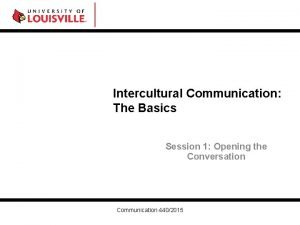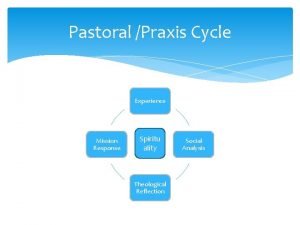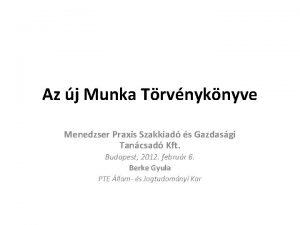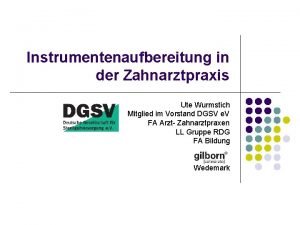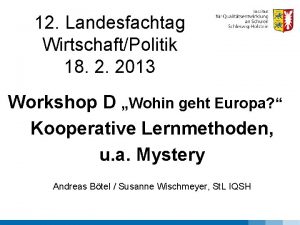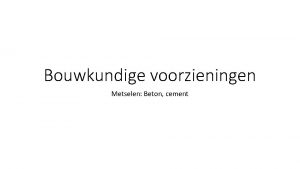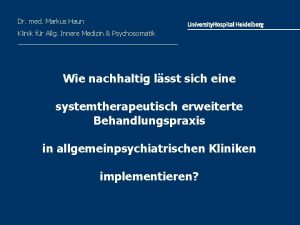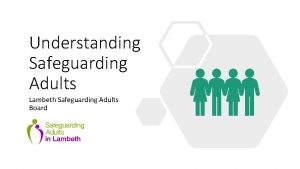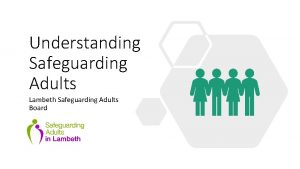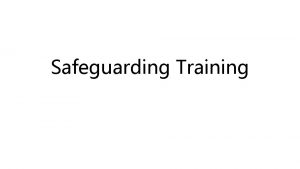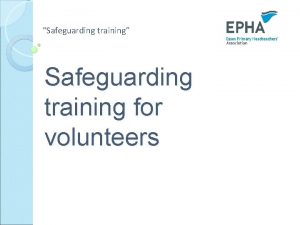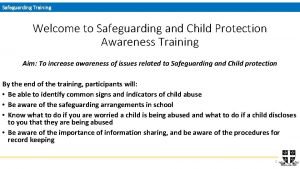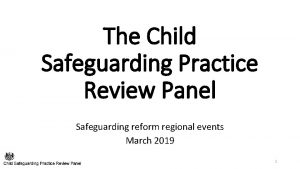SAFEGUARDING EARLY IMPLICATIONS FOR SAFEGUARDING IN UNIVERSAL PRAXIS

















- Slides: 17

SAFEGUARDING EARLY; IMPLICATIONS FOR SAFEGUARDING IN UNIVERSAL PRAXIS HELGA STITTRICH-LYONS EMMA MAYNARD DR CAROLINE EMERY

Children in Need National Picture NSPCC 2010 • • 11 million children in England Wales 4 Million of these are vulnerable 400, 000 actually in need 7% serious physical abuse 1% sexually abused by parent 3% sexually abused by relative 6% Neglected

Our Starting Position. . . Why? We told social services! They did nothing!

Communication • How do you make this. . • Have the same meaning as this. .

Research Questions • Head teachers, SENCO, EY Practitioners & HV’s • What do you understand to be your responsibilities about Safeguarding when – There is an immediate concern a child is “At Risk” – Early Intervention /where there are ongoing concerns – this was our key focus. • What do you think about the expectations on your & your team? • What are your experiences of working with partner agencies?

Working Together 2013 & Key Findings Effective safeguarding systems are those where: Children's needs are paramount “this is central to ALL our professionals’ praxis” All professionals relating with children and families must be alert to children’s needs and risks that abusers pose; “ Assessment, and knowledge base of families is essential” All professionals share information in a timely way “What about shared perspectives & thresholds?

Working Together 2013 & Key Findings High quality professionals are able to use expert judgement Are all professionals are viewed as equally “professional”? All professionals contribute to whatever actions are needed Some professionals have to fight to be heard, involved; in assessment & planning. Local areas innovate, changes are informed by data. . Innovative practice meeting the needs at early intervention stage. Universal services in central position.

Early Years Data • “I find a lot of outside agencies don’t regard Early Years as professional as schools – its like the children go up to school and all of a sudden everybody can get involved, and information gets shared – as early years we are forgotten about” • “We make it our mission to find out – we are like dogs with bones and we won’t let go until we know what’s happening” • “Where we have remained consistent – we have been here for years – but (LA) is shuffled about continually, and that happens with social care – I don’t know who is working on the case”

Health Visitors Data • “Its not intervention, its crisis management” • “CAF is a plaster to manage the challenges in place” • A strong sense of wanting to get across numbers & level of need – in contrast to the time to see the children. DCSF 2012; • 538, 000 referrals to children’s services • Initial Assessment 226, 300 (7 working days) • The Gap. . . Those who were No Further Action. . ?

Head Teachers & SENCO • “If you’re talking about working together we can only do that properly if we have built relationships with people, or at least with the service so we know what the expectations are and how the service works, and their expectations of us. The difficulty with social care comes because they have so many staff changes that getting the consistency can be extremely difficult. ”

• “What’s good is when you have stability of workers – you know how they work and we have communication over the small as well as the big issues. With some SWs we have daily contact – this is what we’ve done, the child is in, they are not in. Because they don’t have the resources they used to, its now “can you as a school do that? – can you make contact and knock on the door”

• “(Sometimes with the advice. . ). . its like “yes, we did that. . ” – they don’t always seem to realise the lengths we’ve already gone to when we make that call. ”

Child neglect: the scandal that never breaks 75% of the 5, 000 children surveyed knew someone who showed at least one sign of neglect. (Children identified other Children!) Key findings: 40 % of parents want more information on where to go for help 32 % of professionals feel powerless to help neglected children 65 % of social workers said cuts impeded their ability to intervene 73 % spending cuts will make future intervention more difficult

Protective Nature of Professional Practice (Beyond the CP Procedures. . ) FOUR Preconditions for a paedophile to sexually abuse a child (Finkelhor, 1984 cited in Sanderson 2004). 1 Motivation 2 Internal inhibitors 3 External inhibitors – Importance of PRAXIS 4 Resistance Child’s own protective factors Safeguarding Praxis: confidence of practitioners, social & emotional development of children Resilience & Coping Mechanisms

Head teacher “. . I think it spikes at the end of term because the children are thinking they are not going to be in their place of safety for the next week. And they are worried about what’s going to happen and they build up enough courage to tell us – even for those children with immediate concerns, its been building up for quite a while – its not a one off incident that has led to the CP concern – its lifestyle and getting them to the point where they see “actually that’s not acceptable behaviour, it shouldn’t be happening to me and I’m brave enough to do something about it”. And I think its that worry – they know we are going to be at home and see that person every day. ” Underpins the Finkelhor work as before

Conclusions 1. Responsibilities. . Very clear and consistent across all participants – more straightforward where needs where very high level. A clear sense of ownership & concern for children. 2. Expectations. . Schools and EY Settings wanting to be a central point – with the resources. This revolved around the daily contact they have with children and families. 3. Agencies. . Key issues of trust, and consistency. . . Relationships. .

Reading • Action for Children (2013). Impact. • Df. E. (2012). Statutory Framework for he Early Years Foundation Stage. • Df. E. (2013). Working Together to Safeguard Children. A guide to inter-agency working to safeguard and promote the welfare of children • Early Education. (2012). Development Matters in the early Foundation State. • Powell, J. & Uppal, E. L. (2912). Safeguarding Babies and Yong Children. Ou. P. • Sanderson, C. (2010). The Seduction of Children. Kingsley Publishers.
 Culture as a resource
Culture as a resource Cochemer praxis
Cochemer praxis Cycle of social praxis
Cycle of social praxis Cook & chill grundlagen und erfahrungen aus der praxis
Cook & chill grundlagen und erfahrungen aus der praxis Administrative theory & praxis
Administrative theory & praxis Menedzser praxis
Menedzser praxis Intercultural praxis definition
Intercultural praxis definition Menedzser praxis
Menedzser praxis Praxis model of contextual theology
Praxis model of contextual theology Instrumentenaufbereitung zahnarztpraxis
Instrumentenaufbereitung zahnarztpraxis Praxis geographie extra lösungen
Praxis geographie extra lösungen Facebook.com
Facebook.com Utp tester praxis
Utp tester praxis Mengverhouding beton
Mengverhouding beton Hygieneschleuse geflügel
Hygieneschleuse geflügel Number and quantity praxis problems
Number and quantity praxis problems Praxis dr haun
Praxis dr haun Early cpr and early defibrillation can: *
Early cpr and early defibrillation can: *
